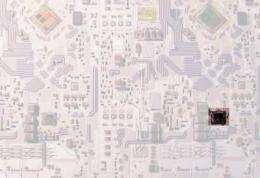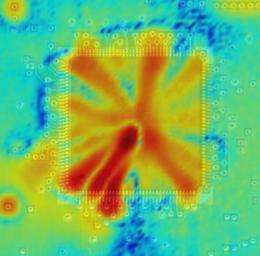Electrosmog on the circuit board

Their miniature size is their strength - and also their weakness. Be it in cell phones, cars or computers, electronic components are getting smaller and smaller and increasingly powerful. The smaller they are, the faster they can switch and the less energy they need for each switching operation. However, as energy requirements shrink, so do signal-to-noise ratios.
"Circuits are becoming more and more susceptible with each generation," explains Thomas Mager of the Fraunhofer Research Institution for Electronic Nano Systems ENAS in Paderborn. "Only a few years ago, it still took several volts to destabilize processors. Today, a few hundred millivolts are sometimes enough to disrupt millions of transistors." This means that designers of electronic circuits need to give greater consideration to electromagnetic compatibility. It is no longer just a question of protecting complete electronic packages such as cell phones or MP3 players against external influences, or shielding the environment against their electromagnetic emissions, but is also about how each individual component on the circuit board behaves.

In a collaborative project carried out with Continental and Infineon Technologies, the Fraunhofer ENAS has developed a measuring system that can locate even the weakest electrical and magnetic fields to an accuracy of a few hundredths of a millimeter. Where are there areas of conspicuously high electromagnetic radiation? How do the components influence one another? The near-field scanner can scan not only individual chips and processors but also complete laptops, cell phones or aircraft control units, and can reveal which types of field the test object is radiating.
"We are also working with our French project partner CEA-Leti on a function that applies targeted electromagnetic fields to the test object. In this way, we can test for areas that respond sensitively to external fields," says Mager. This makes the system particularly interesting for developers of smart cards. Fraudsters elicit confidential information from bank cards by bombarding them with pulses of laser light, electrical current or voltage. The resulting field patterns can reveal details about the chip card, such as its PIN number. The near-field scanner provides time- and space-resolved images of the radiated fields of the card, allowing their weak points to be identified and helping card developers to better protect their products against fraud.
Source: Fraunhofer-Gesellschaft (news : web)















